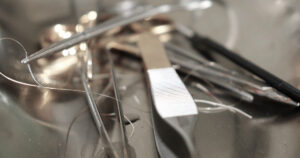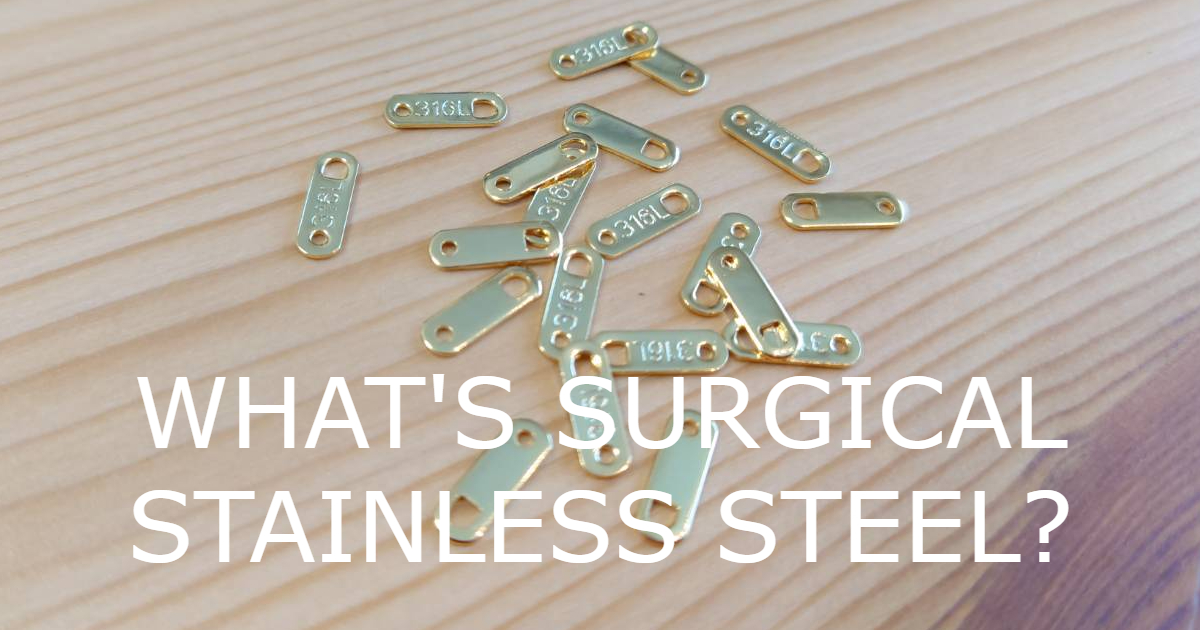This time’s theme is about the main material “surgical stainless” used in TORAZOU accessories.
There are various metals used for accessories. For example, 18 carat gold, platinum 900, brass, silver 925, pink gold, 14 kgf, etc.
Then, I will explain thoroughly why “surgical stainless” is used in our shop, and advantages and disadvantages of surgical stainless.
Cause of metal allergy
Metal ions, which are dissolved in sweat and heat from the metals we wear on a daily basis, such as accessories, watches, and dental metals, combine with proteins in the body and change into new proteins. Allergic reactions occur when our bodies consider them “foreign”. This is the mechanism that causes symptoms of metal allergy.
Tattoo, art makeup, and metal in food can be the cause.
It seems not only from accessories.
Two types of metal allergy
Metal allergy is divided into two types according to the symptoms and causes mentioned above.
Contact dermatitis
It is literally a metal allergy where metal directly touches the skin. When you wear metal such as accessories, watches, art makeup or tattoos, redness or itchiness will appear on or around the part you touch.
Systemic Metal Dermatitis
It is a metal allergy in which metal such as silver teeth used in dental treatment and metal contained in food occur throughout the body via mucous membrane in the mouth and digestive tract. Symptoms include palmoplantar pustulosis, in which the hands and feet are filled with pus, and eczema peridoticum, in which blisters form on the hands and feet.
How do you prevent metal allergies from accessories?
Metal allergies can be prevented by avoiding the metal accessories that cause them. It is possible to prevent the onset of metal allergy by knowing the characteristics of the metal you wear.
You will protect your health.
Risk of metal allergy for each metal
Among the various metals, which metal has the highest and lowest risk of allergy is summarized below.
| Risk of metal allergy for each metal | |
|---|---|
| Risk level :very high | nickel,cobalt,palladium |
| Risk level :high | Chromium, tin, zinc |
| Risk level :middle | Copper, aluminum |
| Risk level :low | Gold, platinum,silver |
| Risk level :very low | Titanium, surgical stainless steel, zirconium |
As shown in the table above, the risk of metal allergy to surgical stainless steel is quite low. It can prove that it is a metal material that does not cause allergy easily.
As an aside, there is an explanation that titanium, zirconium, high-purity gold (over 22 gold gold), and palladium-free platinum have a lower risk of metal allergy than surgical stainless steel.
It seems there are individual differences, so the above table is just a guide.
WHAT’S SURGICAL STAINLESS STEEL?

Now, what is surgical stainless steel? What kind of metal is it?
The name “surgical stainless steel” was coined to mean “medical” and “stainless steel”.
As you can see from the word “surgical”, it is an alloy mainly used for medical scalpels and various other medical devices.
Surgical stainless steel is a common name. It is a kind of stainless steel, and alloys such as SUS 316 and SUS 316L are called surgical stainless steel.
Merits of surgical stainless steel
There are four advantages to using surgical stainless steel for accessories.
Have a low risk of metal allergy
As mentioned earlier, like pure gold and titanium, surgical stainless steel has a very low risk of metal allergy and is a metal material that does not cause allergy easily.
Less discoloration and less rusting
The reason stainless steel does not change color or rust is because of its “non-conductive coating.”
The passive film is tough and prevents the progress of rust. It is an excellent film that regenerates instantaneously even if it is damaged and broken if there is oxygen around it. The film protects stainless steel from rust and discoloration.
This is a trick to prevent stainless steel from discoloring and rusting.
Resistant to scratching
Surgical stainless steel is very hard and durable. Surprisingly, it is said that it is hard enough to damage the blade because it cannot be scratched with a knife.
High quality and pure materials such as gold, silver and platinum sometimes deform in humid or hot places, but in the case of surgical stainless steel, there is no need to worry about deformation regardless of temperature.
Reasonable price above quality
Among the materials mainly used for accessories, there are 18 carat gold or more gold and platinum of PT 900 ~ 1000 which are hard to cause metal allergy, but they are too expensive to buy.
However, because surgical stainless steel is an artificially made alloy, it is cheaper than precious metals such as gold and platinum.
From the above 4 points, I think that surgical stainless steel is a metal that can achieve a quality above the price!
Disadvantages of surgical stainless steel
Difficult to resize or process
Due to the characteristics of surgical stainless steel, it is tough and hard, so resizing and processing are not easy.
The difficulty of changing the design of rings and necklaces is a little demerit in creating designs.
Only a few kinds
This also has a big problem in designing…
Currently, there are not many kinds of accessories such as pierced earrings and chains made of surgical stainless steel.
But I think it will increase as the demand for surgical stainless steel increases from now on.
Summary
Why is surgical stainless steel used by our shop TORAZOU? Do you understand?
The beauty of the metal is attractive because it has a low risk of metal allergy similar to expensive precious metals, and it is resistant to scratches and rust and has a long and beautiful shine.
Surgical stainless steel is becoming the hope of accessories.




コメント